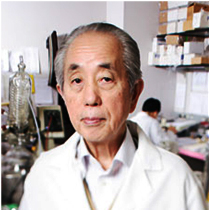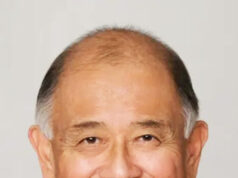| (SEATTLE) Sen-itiroh Hakomori, a shining star in glycosphingolipid medical and biochemical research during his seven decades of ground-breaking study, died on November 10, at the age of 91, at his home in Mercer Island, Washington.
Sen-itiroh Hakomori was born on February 13, 1929 in Sendai, Miyagi Prefecture, In 1959, the Cancer Research Institute at Tohoku Pharmaceutical University was established, where Dr. Hakomori was a professor, and he was instrumental in new cancer cell studies. Subsequently, the Tohoku Center became the foremost cancer research facility in Japan. In post-war, occupied Japan, Dr. Hakomori met his future wife, Mitsuko, and they were married in 1946. She was a steadfast partner, mother of three, and helpmate throughout his career for 74 years. A Long and Productive Career In 1963, Dr. Hakomori and his young family immigrated to the U.S. where he was appointed to important positions at a series of renowned research institutions including Massachusetts General Hospital, Harvard Medical School, and Brandeis University. He applied for U.S. citizenship and soon became an internationally recognized pioneer and pivotal leader in glycosphingolipid research, in the study of cancer and other cellular processes. By the late 1960s, Dr. Hakomori was seeking wider horizons and the newly established Fred Hutchinson Cancer Research Center, under the auspices of the University of Washington, appeared to be a promising fit. The original center, located on Seattle’s “Pill Hill,” soon became a world leader in cancer research, and paved the way for many discoveries and advancements in the field. Dr. Hakomori’s career path led him to be associated for decades with the University of Washington. From 1971-2006, he served as Professor of Pathobiology, School of Public Health and Community Medicine, and Professor of Microbiology. The UW named him Professor Emeritus of Pathobiology and Global Health in 2006. From 1986 to 1994, Dr. Hakomori founded and directed the Seattle-based Biomembrane Institute, contributing key papers and patents in the field of cancer and blood-group antigen research. Thereafter, he was director of a key lab at the Pacific Northwest Research Institute, also in Seattle. Accolades for Research International recognition for his seminal research came when Dr. Hakomori was nominated five times for the Nobel Prize in Chemistry. He also received multiple prestigious awards and honors including the Philip Levine Immunohematology Award (1984), National Cancer Institute Outstanding Investigator (1986-2000), Karl Meyer Award, Society of Glycobiology (2011), and the Rosalind Kornfield Award for Lifetime Achievement in Glycobiology (2011). As a crowning achievement, he was elected to the National Academy of Sciences in 2000, one of the highest honors a scientist can receive. Dozens of researchers who were trained and guided by Dr. Hakomori at the University of Washington, Fred Hutchinson Cancer Center, Biomembrane Institute, and the Pacific Northwest Research Institute, are now leading scientists in glycobiology around the world. He is fondly remembered for his extraordinary influence and hands-on tutelage during his weekly lab meetings and bench-top discussions. In more than 60 years of professional experience, Dr. Hakomori published more than 700 peer-reviewed, forward-thinking articles in top-tier journals – an output virtually unparalleled in modern scientific research. His work is widely known and recognized globally in the field of cancer biology and the fine molecular structure of cellular membranes. What’s more, these advancements have been instrumental in developing diagnostic and therapeutic approaches to cancer and other diseases. In addition, Dr. Hakomori made key discoveries in understanding of the ABO blood group—important for transfusions—at a molecular level. Passing the Baton Dr. Hakomori hoped that one of his two sons would follow him into medical research. But, when they decided to follow other career paths, he quipped: “I don’t really think you need to go into medicine… but whatever you do, even if it’s picking up trash, be the best damn trash hauler there is.” He is survived by his wife, Mitsuko, a noted Ikebana floral artist; daughter, Naoko Vaughn; sons, Yo-Ichiro and Ken-Jiro Hakomori; four grandchildren and two great-grandchildren; brothers Kyojiro and Shozaburo; and sister, Kazuko.
|







